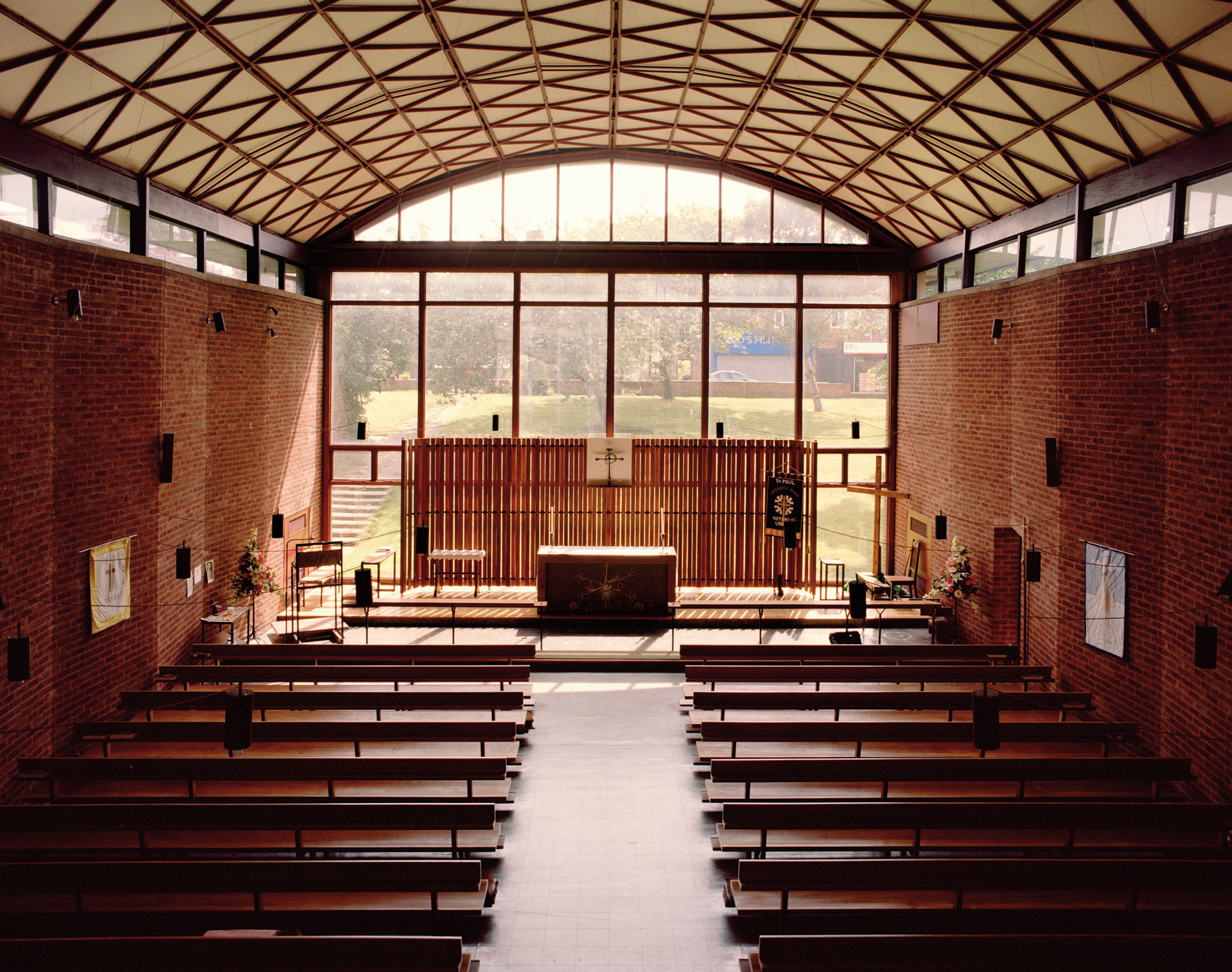Opened in 1959 and designed by noted architect Sir Basil Spence, this Grade II* listed church is a testament to modernism’s ability to deliver striking results within a minimal budget using basic materials (brick, steel, concrete and glass).
Modernist Churches of Sheffield
As a major industrial city and manufacturer of munitions during wartime, Sheffield was a strategic target and suffered significantly when the German forces bombed the city in 1940.
The need to rebuild major swathes of the city after the second world war aligned with austerity, a shortage of traditional materials, and the rapidly emerging architectural style of modernism. Focused on building with contemporary materials such as steel and concrete, modernism also held a strong desire to prioritise function and social progress over opulence.
Breaking with the 19th century’s gothic and decorative traditions, key modernist architects created striking, bold and unexpectedly beautiful buildings with previously unachievable forms.
The period of post-war development saw modernism adopted by churches that were established to serve the growing communities of new-build estates throughout Sheffield. These new churches focused on democratising their halls, emphasising open-ness, natural light and unique angles, and demystifying previously rarefied spaces.
Our printed Modernist Churches of Sheffield tour maps out nine such churches. It was written by Greg Povey, features photography by Theo Simpson, and was launched at the Sheffield Modern architecture weekender in October 2018.
See below for an excerpt from the tour, and order a copy of it in full for £2 in our online shop.

St Catherine of Siena
This Grade II listed 1950s church was built under the direction of Sir Basil Spence. A glazed pathway connects its brick chapel to a bell tower decorated with a sculpture by Ronald Pope, depicting the church's namesake saint at the foot of Jesus.

Holy Cross
A striking, distinctive and genuinely awe-inspiring modern building, perched on a hill overlooking Sheffield. Also seen in This is England '86.

Trinity United Reformed Church
Situated directly opposite Endcliffe Park and flanked on either side by 19th-century stone-built peaked terraces, the Trinity's brutalist, mostly windowless facade of greying concrete appears completely alien in its surroundings.


